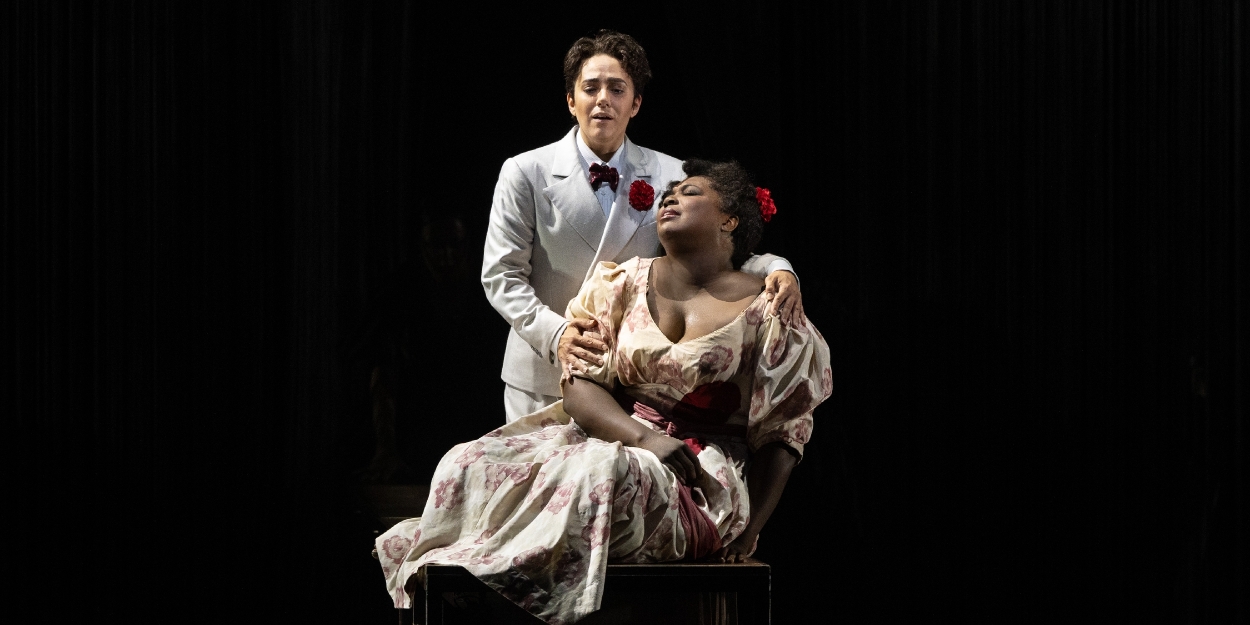Review: Golijov-Hwang AINADAMAR Brings Dreams, Flamenco and Death in Met Debut
“Opera in three images” arrives in Colker production under Harth-Bedoya with Blue, Mack and Villalon heading the cast

Osvaldo Golijov’s AINADAMAR, which made its Met debut this week, with a libretto translated by the composer from the English original by David Henry Hwang, isn’t the first Spanish language opera at the Met, but it’s certainly the first to sound that way.
The first was Daniel Catan’s FLORENCIA EN EL AMAZONAS back in November 2023 and prompted a member of the opening night audience to yell out “Viva la ópera en español!” (“Long live opera in Spanish!”) as the performance was beginning. Yes, the work was in Spanish, all right, but it felt like Puccini.
According to the program, the musical vocabulary of Golijov (born in Argentina, with a PhD from the University of Pennsylvania under George Crumb) encompasses classical, jazz, folkloric and regional, and flamenco music from a variety of Spanish sources (including Christian, Jewish and Muslim traditions). The Met orchestra under the leadership of debutant Miguel Harth-Bedoya brought out the many nuances of the composer’s diverse language, joined by Adam del Monte on guitar and Gonzalo Grau on a percussion instrument, the cajon.
Of all Golijov’s sounds, the production of director-choreographer Deborah Colker seems to place the emphasis on the flamenco and it moved that way, including dance that echoed Lorca’s cante jondo, considered “the most profound style of Romani flamenco.” In fact, it sometimes felt more like a dance piece than an opera—falling very neatly in the current discussion of “what’s an opera?”—without coming up with any new answers.
Colker did a splendid job in filling the Met’s vast stage with movement, from the very start when the lone dancer Isaac Tovar mesmerizes the audience. (He was later joined by Sonia Olla and other dancers whose movement was crucial to the evening’s choreographic excellence, including flamenco by Antonio Najarro.) Her collaborators--set and costume designer Jon Bausor, lighting designer Paul Keogan, projection designer Tal Rosner and sound designer Mark Grey--were key in making the simple production shine where more elaborate ones at the Met have not.
The 80-minute piece is divided into three segments--referred to as “Images”--flew by. The first one, taking place at a theatre in Montevideo in April 1969, is called Mariana, with soprano Angel Blue as the Catalan actress Margarita Xirgu, looking back at the 40 years since she appeared in the premiere of Federico Garcia Lorca’s breakthrough play, “Mariana Pineda,” the tale of a political martyr from the mid-19th century. Blue sounded as vibrant as I’ve ever heard her.
Mezzo Daniela Mack brought a vivid beauty to the pants-role of playwright-revolutionary-oppressed homosexual Lorca; she conveyed a keen clarity to the portrait of an artist torn between his work and his politics, showing deep understanding to the many aspects of his life. Soprano Elena Villalon portrayed Nuria, a student of Xirgu, singing with urgency while providing a complementary sound to Blue.
Also introduced is tenor Alfredo Tejada, as the Falangist Ramon Ruiz Alonso, who arrested and executed Lorca in 1936. The Met chorus was in fine--better than fine--form.
The second Image is Federico, as Margarita thinks back at the last time she saw the playwright, with the Spanish Republic under attack from the right-wing generals. She has tried to convince him to leave the country and go with her to Cuba, but he instead returns to Granada, to work on his writing. While no one knows the exact details of Lorca’s death, Margarita has a vision of the end of his life, as he goes to “Ainadamar,” the Fountain of Tears, where Alonso leads him and two others to their death, made to confess their sins.
The final of the three Images that divide the work is Margarita, as the actress lays dying, with the ballad of Mariana Pineda retold once more in fascist Spain. (Never forget!) Lorca’s work—as well as the return of Margarita—are forbidden in Spain, though she keeps his memory alive in Latin America.
Tracing the life and work of Lorca as well as Margarita, the spectacle sometimes appears to overtake the depth of the characters’ feelings. Perhaps some of the opera’s troubles are related to Golijov’s reputation as a problematic artist—whose ambitions periodically have seemed to outdo his ability to be productive. Nonetheless, we can’t help but be moved by him.
AINADAMAR will be performed through the matinee of November 2. For more information and tickets, see the Met’s website.
Caption: Angel Blue as Margarita Xirgu and Daniela Mack as Federico García Lorca
Photo: Marty Sohl/Met Opera
Reader Reviews

Videos

